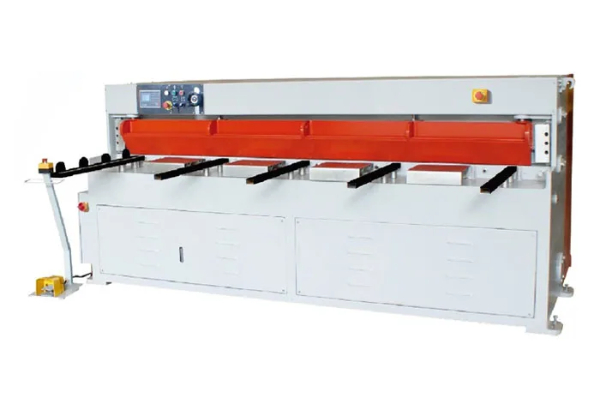
Troubleshooting Common Issues with Metal Plate Bending Machines
- By:Metmac
- 2024-08-21
- 170
Metal plate bending machines are essential for shaping and forming metal sheets in various industrial applications. However, like any machinery, they can encounter issues during operation. Understanding and troubleshooting common problems can help minimize downtime and ensure optimal performance. This article provides comprehensive insights into troubleshooting issues with metal plate bending machines.
Material Issues
Material Too Thick or Hard: Check if the material thickness and hardness exceed the machine’s specifications. Adjust the bending force or consider using a different material within the specified range.
Uneven Material Surface: Ensure the material surface is flat and free of any defects. Inconsistent material thickness or roughness can affect bending accuracy and cause uneven bends.
Material Too Thin or Soft: If the material is too thin or soft, it may bend excessively or wrinkle. Use a backing material to support the material during bending or adjust the bending angle to minimize deformation.
Machine Setup
Incorrect Bending Angle: Verify that the bending angle setting is accurate. Misalignment or incorrect calibration can lead to incorrect bending results. Perform angle adjustment or calibration as necessary.
Insufficient Bending Force: Check the machine’s hydraulic system for any leaks or pressure issues. Ensure sufficient hydraulic pressure to generate the required bending force.
Excessive Bending Force: If the bending force is too high, it can damage the material or cause tool breakage. Verify the material thickness and adjust the force accordingly.
Tooling Issues
Worn or Damaged Dies: Dies are essential for shaping the material during bending. Worn or damaged dies can produce uneven or inaccurate bends. Inspect the dies regularly for signs of wear or damage and replace them as needed.
Incorrect Die Selection: Choose the appropriate die size and shape for the desired bend. Incorrect die selection can result in improper material forming or damage to the machine.
Insufficient Die Lubrication: Lubricate the dies regularly to minimize friction and prevent material sticking. Lack of lubrication can increase wear, reduce bend accuracy, and damage the dies.
Operator Errors
Improper Machine Maintenance: Neglecting regular maintenance, such as cleaning, lubrication, and hydraulic fluid changes, can lead to performance issues. Follow the manufacturer’s maintenance schedule to ensure optimal machine operation.
Overloading the Machine: Exceeding the machine’s capacity by bending materials beyond its specifications can put undue stress on the components and lead to premature failure.
Incorrect Loading or Alignment: Ensure proper material loading and alignment to avoid skewed or uneven bends. Misalignment can also damage the machine or the material.
Other Issues
Electrical Faults: Check for any electrical issues, such as loose connections, damaged wires, or faulty components. Electrical faults can affect machine functionality and safety.
Hydraulic Leaks: Hydraulic leaks can deplete system pressure and affect bending force. Inspect the hydraulic system thoroughly, identify any leaks, and repair them promptly.
Overheating: Excessive heat generation during bending can damage machine components. Check for proper ventilation, clean the machine to remove debris, and monitor the operating temperature.
-
Advanced Sheet Metal Rolling, Cutting, and Folding Machines for Efficient Fabrication
2025/10/22 -
High-Precision Sheet Metal Bending and Cutting Solutions for Modern Manufacturing
2025/10/22 -
High-Precision Solutions from Leading Sheet Metal Cutting Machine Manufacturers
2025/09/11 -
Reliable Sheet Metal Equipment for Sale to Support Precision Fabrication
2025/07/17
-
Advanced Sheet Metal Rolling, Laser Cutting, and Folding Machines for Precision Fabrication
2025/10/31 -
High-Performance Sheet Metal Bending and Cutting Machines for Modern Fabrication
2025/10/31 -
High-Quality Sheet Metal Equipment for Sale: Efficient Solutions for Modern Manufacturing
2025/10/31 -
High-Performance Sheet Metal Equipment for Sale: Forming and Shearing Solutions for Modern Fabrication
2025/10/22
-
A Guide to the Latest Innovations in Sheet Metal Folding Machines
2024/11/29 -
Key Features to Consider When Investing in a Sheet Metal Folding Machine
2024/11/28 -
Enhancing Precision with Advanced Sheet Metal Folding Machines
2024/11/27 -
How to Choose the Right Sheet Metal Folding Machine for Your Workshop
2024/11/26






